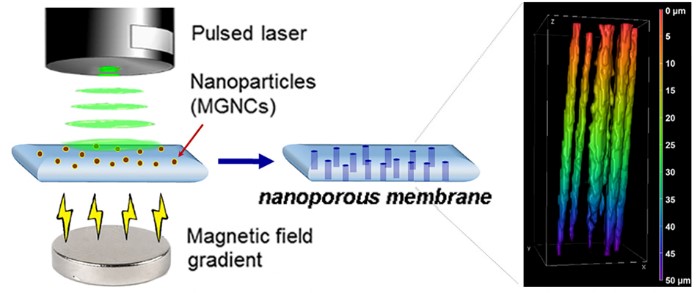Alexander Wei

- Professor | Organic Chemistry, Materials Chemistry
- Email: alexwei@purdue.edu
- Phone: 45257
- Office: 4103D BRWN
- Professor Alexander Wei's individual homepage
Students in the Wei research group use organic and materials chemistry to address scientific challenges of both fundamental importance and technological impact. Current projects include the development of chemical sensor platforms, methods for sustainable synthesis, targeted therapies, and surface chemistry at the nano-bio interface. Several research projects involve the coupling of functional nanomaterials (optical, electronic, and magnetic) with biomolecular or supramolecular recognition, in ways that amplify signal detection or biological response. Three areas of research are described below:
Low-cost sensors: The Internet of Things (IoT) era is driving a growing demand for chemical sensors that can be deployed in a portable and cost-effective manner. We design synthetic receptors that modulate the optical properties of metal nanoparticles or the electrical properties of 2D nanomaterials upon chemical recognition, then embed these into optical or electronic sensor platforms, in collaboration with several faculty in the Colleges of Engineering. Chemical reactions and reagents are designed for attaching aptamers, metal–ligand complexes, and other supramolecular systems onto the surfaces of functional nanomaterials. We also invent nano-manufacturing methods that can convert passive materials into functional ones, for their possible use in chemically responsive labels and packaging. All of these are designed to be compatible with continuous manufacturing processes for scalable manufacturing in the Birck Nanotechnology Center, to expedite benchtop discoveries into testable devices.
Sustainable chemistry: New methods of chemical and materials synthesis may be achieved by using unconventional reaction processes that have a potential for greenness as well as scalability. Research directions in our lab include mechanochemistry with modified milling media, as an solventless approach for activating chemical bonds while reducing carbon footprint, and the design of continuous-flow reactors that can for conducting chemical synthesis in aqueous media under photochemical conditions, or by using applied electric fields.
Targeted therapies, powered by light: Our surface chemistries can be used to present high-affinity ligands toward cell-surface receptors on bacteria or on tumor cells, providing opportunities for targeted antimicrobial or anticancer therapies. Attaching bioactive ligands onto metal nanoparticles allows optical or near-infrared (NIR) light to be used as a trigger for applying photochemical or photothermal effects toward disease treatment, some of which have been validated in vivo using animal models. These projects are in association with the Purdue Center for Cancer Research and the Purdue Institute for Drug Discovery, providing students with opportunities to engage in biomedical research beyond the laboratory bench.

Nanoparticles as etching agents in the fabrication of nanoporous membranes for low-cost sensors.
Education
- B.S., California Institute of Technology, 1989
- Ph.D., Harvard University, 1995
- Fulbright Scholar, University Louis Pasteur, 1996
- Chateaubriand Postdoctoral Fellow, University Louis Pasteur, 1997
Awards
- University Faculty Scholar, 2007